If you’re wondering about the perfect container size for export, this is just one of many things to take into consideration when shipping goods. In this piece, we’ll cover container types, things to keep in mind when exporting, and more.
In a world where shipping goods via sea accounts for 90% of all international trade, it can be difficult to find the right containers for your goods. How can you trust that you won’t be ripped off? What if the container owner lets you down at the last minute? Trying to find containers for export can quickly turn into a waking nightmare.
That’s where we come in. Container xChange is a neutral marketplace for buying, selling, and leasing a wide variety of shipping containers.
We work with over 1000+ reliable members and have boxes available in over 2,500 locations worldwide. We vet all of our members, so you don’t have to worry about being let down by unreliable partners.
Once you’re a member, you won’t believe how easy it is to find the exact container type and size you’re looking for, in just minutes.
Try out our public search today to see for yourself! Just type in the container type, and location, before hitting ‘search’. You’ll be amazed at how many deals are available at the tips of your fingers.
Container size for export: Why the right container matters
Before you do anything, you need to work out what kind of containers you need for your goods. If you choose the wrong container type for your cargo, you’re in for a whole host of issues. Common issues that occur when the wrong container type is chosen include:
- Containers are dropped or fall due to overweight or unevenly distributed cargo inside.
- Cargo is contaminated due to the mixing of cargo that should be separated into different container types. This can cause damage to other cargo.
- Leaks, fires, and temperature damage occurs due to improper packing or miss-declaration of cargo.
- Temperature-sensitive goods are spoilt due to transport in a dry container rather than an insulated or reefer container.
All of these issues slow down your business and cost you money. Luckily, this piece will clear up any confusion you may have, leaving you confident to choose the right container type for your export needs.
Container size for export: Standard containers
You can use a standard container to transport all kinds of dry cargo. Below are the most popular standard containers available.
20ft standard container
The 20ft container is useful for transporting heavy machinery and raw materials like rock and iron ore. If you’ll be transporting cargo to and from ports without advanced lifting machinery, the 20ft is a great option. Why? It’s smaller and lighter than other container types. 20ft boxes are also great for intermodal transport, as they’re the easiest to move around.
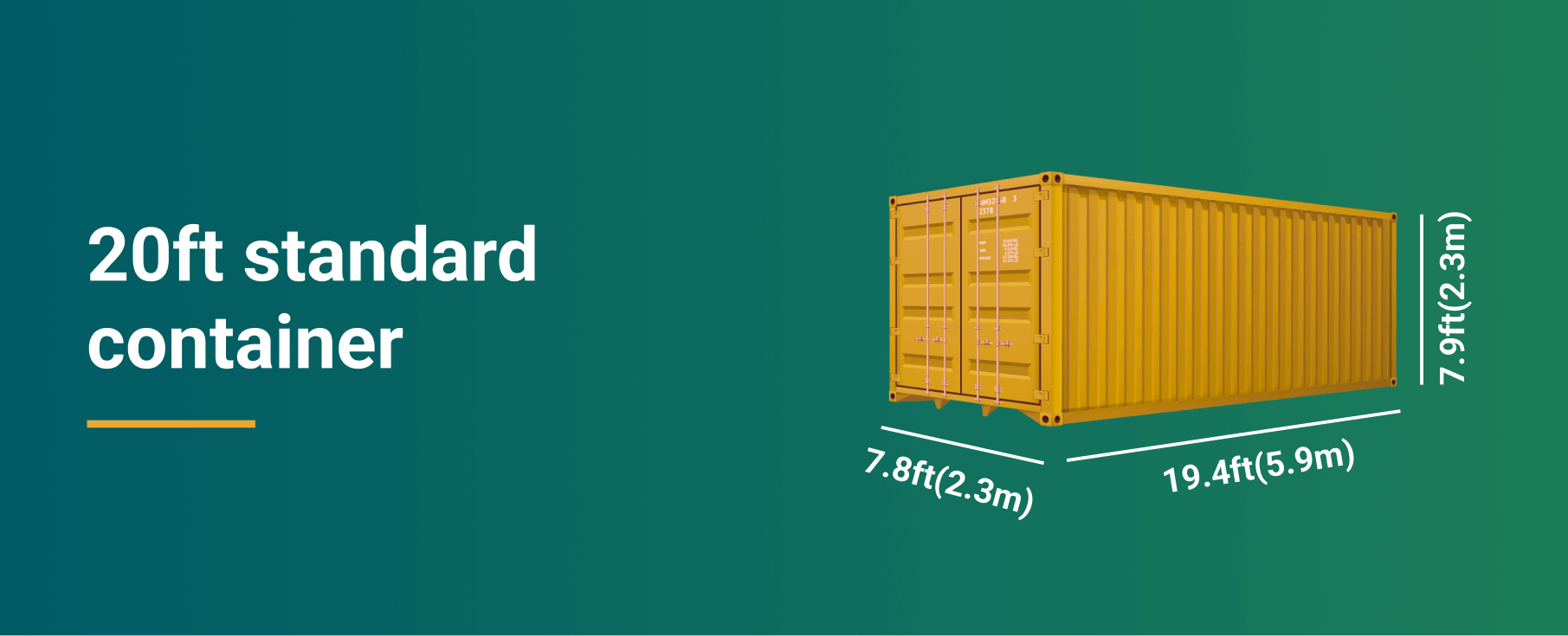
40ft standard container
You can use a 40ft to pack in large amounts of consumer goods. 40fts are perfect for transporting things like cotton, furniture, grains, tobacco, and electronics. The 40ft has twice the capacity of the 20ft box, so if you’re wanting to export large quantities of dry goods, the 40ft’s a great option for you. You can stack around eight 40ft containers on top of one another during shipping.
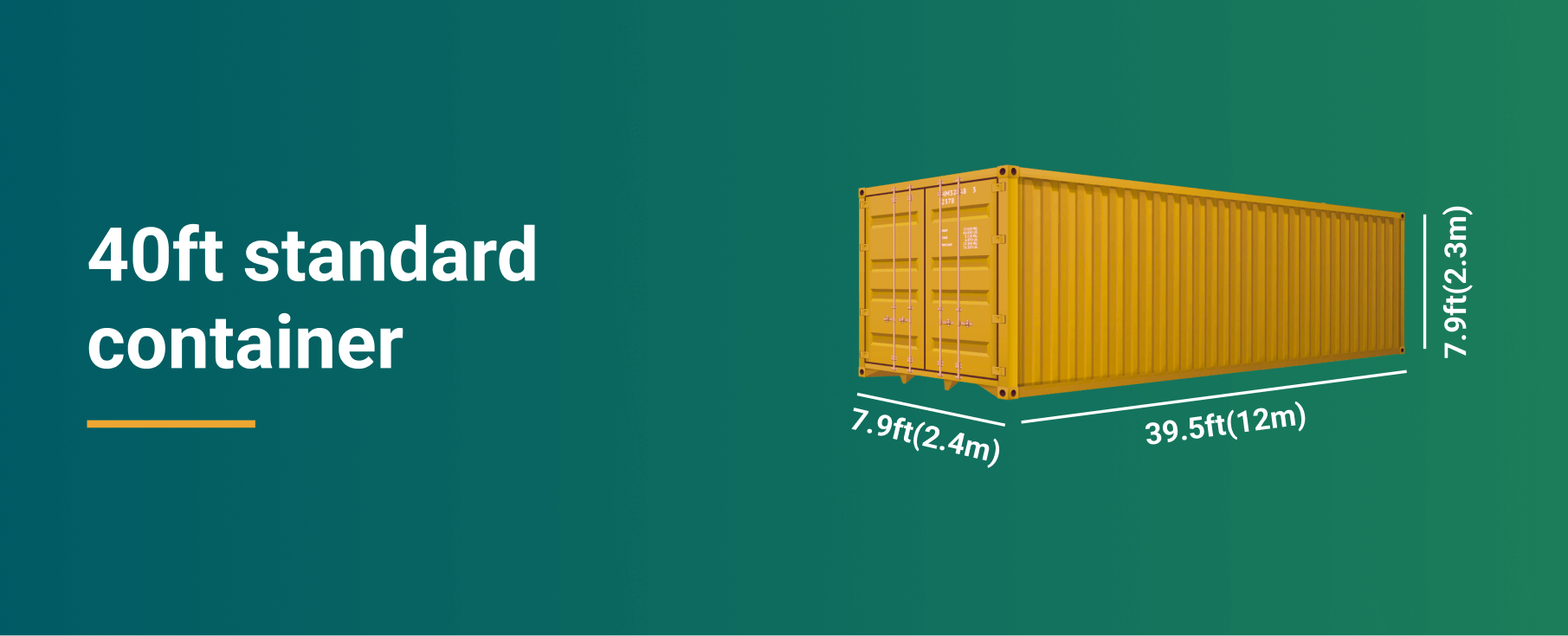
40ft High cube standard container
The 40ft high cube container is ideal for over-height cargo that won’t fit into a standard 20ft or 40ft box. A 40ft HC can fit anything under 2.7m / 8.1ft tall. The high cube is also perfect for transporting furniture, and awkwardly-shaped machinery. If you have a large volume of lighter consumer goods, the high cube is also great – that extra foot of height can make a big difference!
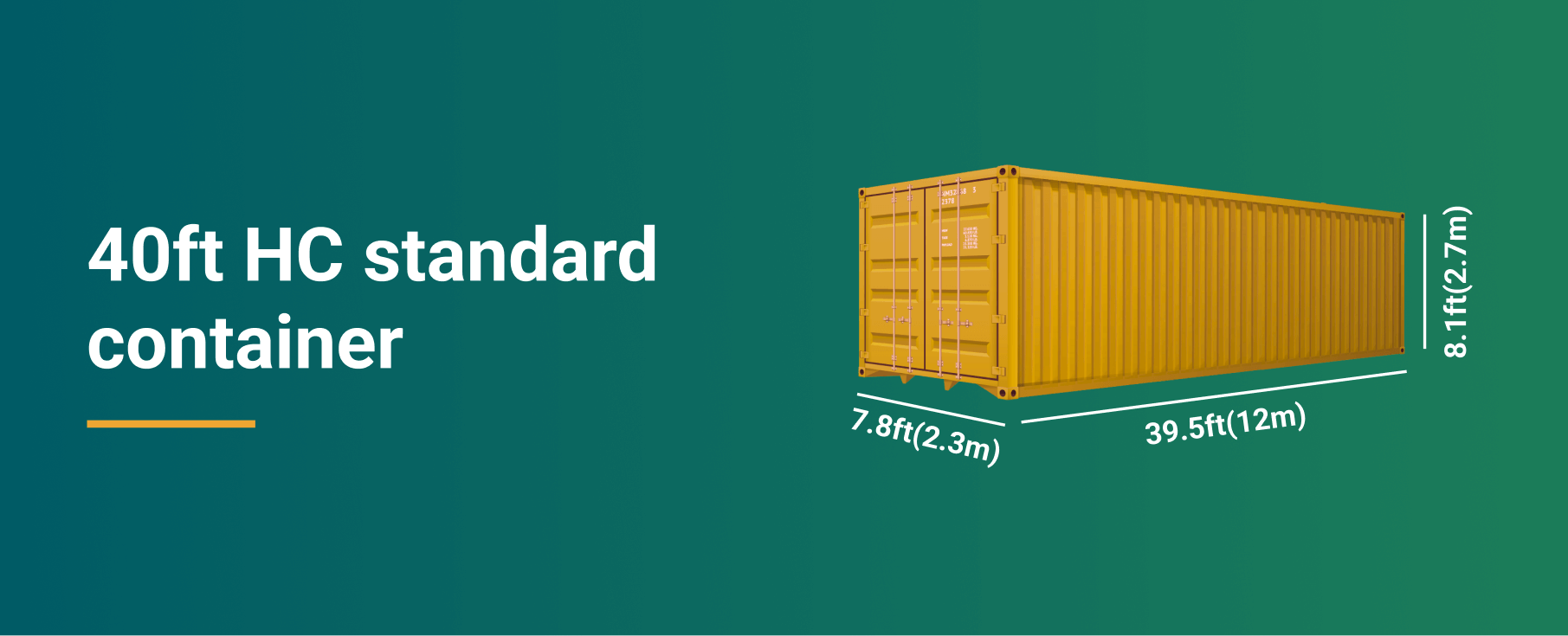
Container size for export: Special containers
You can use a special containers for goods that are temperature-sensitive, difficult to load and unload, awkwardly shaped, or extremely large. There are specific special containers for specific kinds of goods. We’ll go over some of the most popular special boxes below.
Reefer container
If you’re transporting temperature-sensitive goods or frozen products, a reefer container is for you. Reefers are basically large fridges, and are perfect for transporting goods such as fruits, dairy products, chocolate, wine, and pharmaceuticals. They maintain a specific temperature throughout the journey, keeping the cold chain intact, and preventing goods from spoiling.
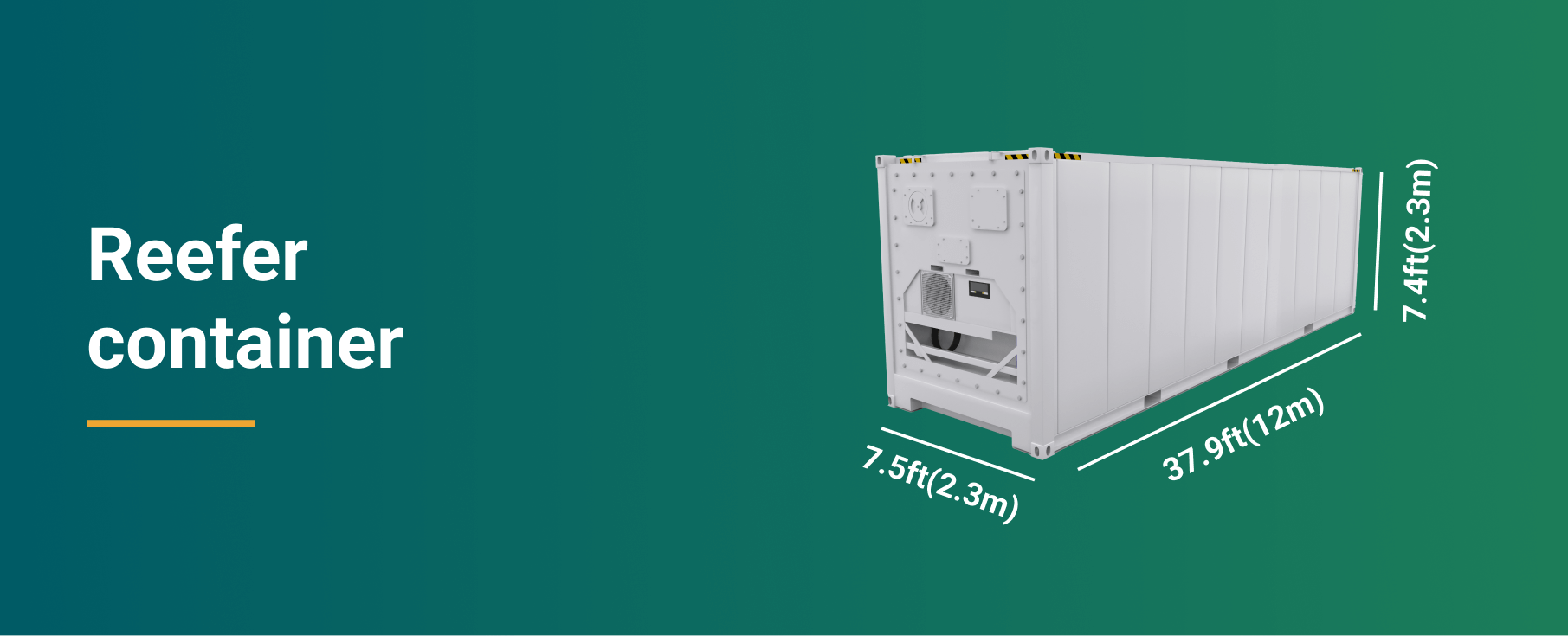
Flat rack
Flat rack containers don’t have walls on their longer sides. This allows for easy loading and unloading of cargo. They’re extremely versatile, allowing shippers to transport all kinds of unique items. If you’ve got cargo that’s ‘out-of-gauge’ or an awkward shape, a flat rack is your solution. It’s also a great option for standard cargo such as boxes, making them quick and easy to pack.
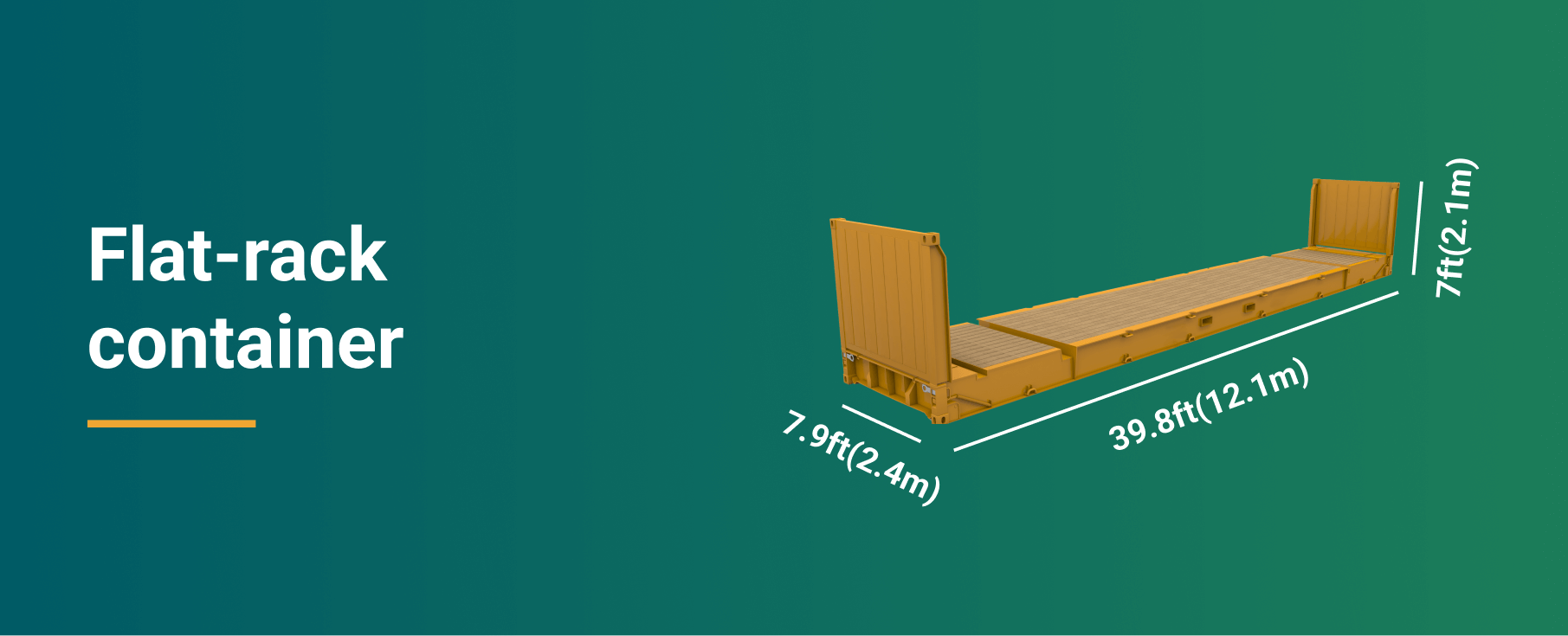
Double door
Double door containers, as their name suggests, have doors at both the ends. If you’re transporting vehicles, a double door is ideal, as you can drive vehicles in from one side, and out from the other! This way you can avoid reversing the vehicle, which can be tricky. Double doors are also great for transporting boats and motorbikes.
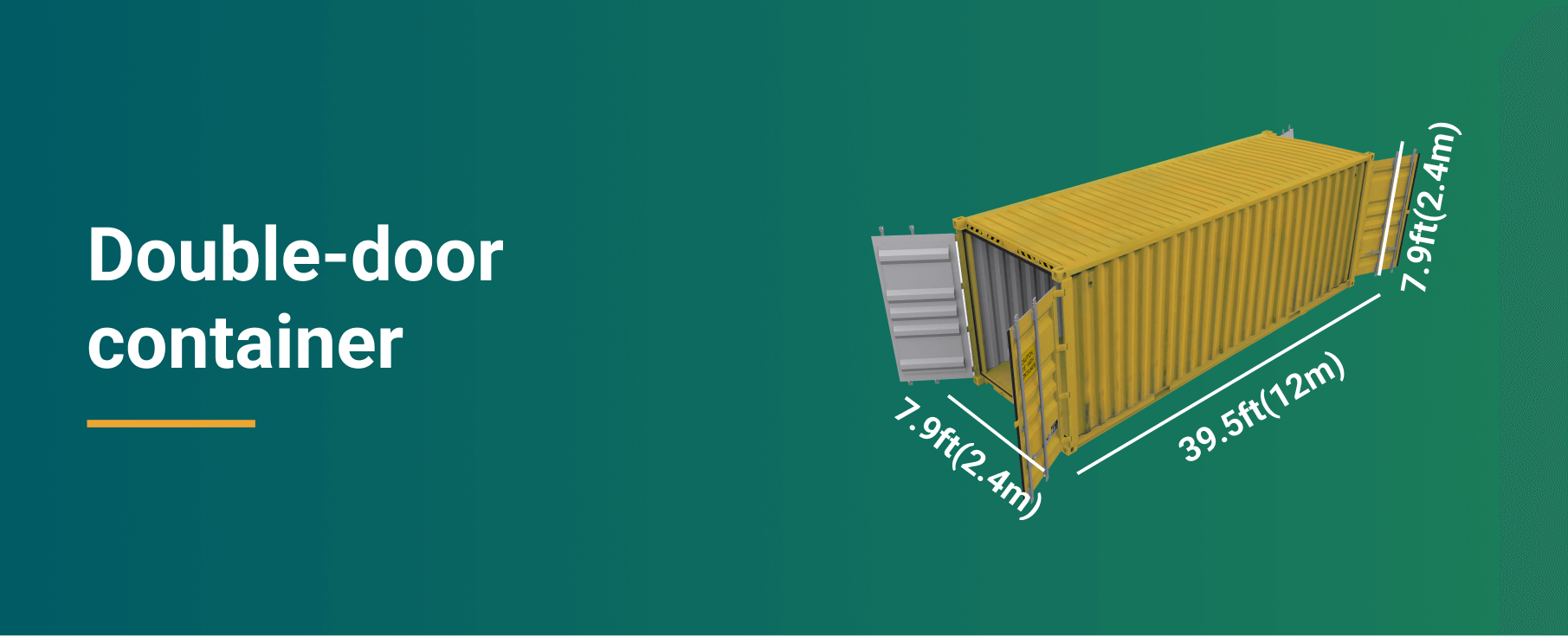
Pallet wide
Pallet wide containers are specifically designed for, you guessed it, pallets. These boxes can accommodate two rows of pallets, placed side-by-side. The measurements are such that the pallets fit in just right, with no space for movement or sliding. When looking for a pallet-wide box, you need to make sure you’re buying the right size for your pallets. Here are three common pallet sizes:
- The most common pallet size is 40” x 48” (American pallet size).
- European pallets measure 40” x 47” approximately (Euro-pallet).
- Australian pallets are around 46” x 46”.
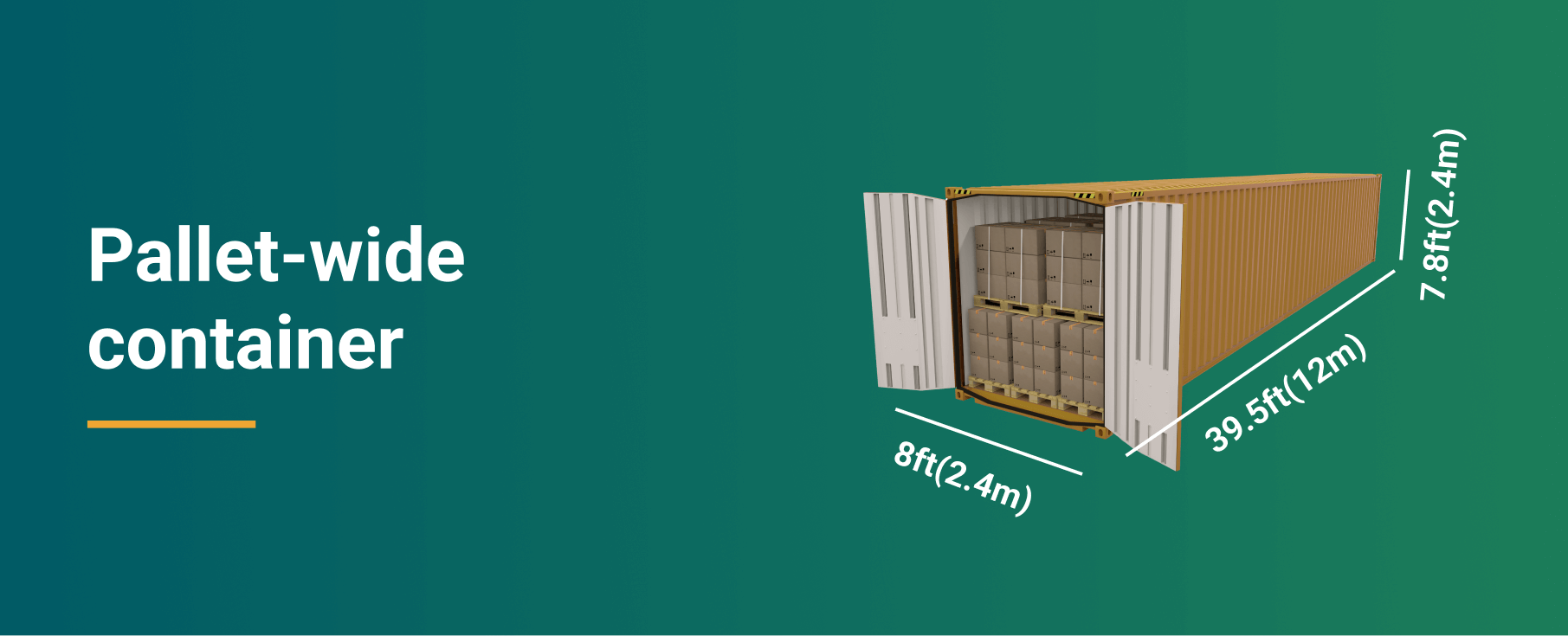
Want to learn more about the different container types and their dimensions? Check out this blog post.
Container size for export: Things to look out for
If you’re exporting goods, there are some important things to keep in mind.
Export restrictions
Before you start planning for export, make sure your cargo doesn’t fall under restricted items. Due to sanctions in certain parts of the world, not all goods can be exported to all countries. Do your research beforehand, otherwise, you risk fines, goods being confiscated, or even legal consequences. Check out this blog post to learn more about trade sanctions, and how to avoid them.
Calculate the weight of your boxes
Make sure you know the weight of your boxes. Boxes must not exceed the weight restrictions for the container type. If they do, your cargo won’t be allowed on board the ship. We’ll go over how to calculate your load in the next section.
Pack correctly
It’s important to pack correctly, distributing weight evenly throughout the container. If weight is distributed unevenly, this can cause items to fall, damage other cargo, or even topple the box entirely.
How to determine the load capacity of your container for export
You need to know the load capacity of your container, so that you can work out beforehand how much can be packed in. Check out the below table, to see the load capacity of your box.
Load capacity of your container
The load capacity is how much can be loaded into the container. A container can’t be packed full. In fact, containers shouldn’t be packed above 80% of their total capacity.
The load capacities of the standard and special containers covered in this blog post are as follows:
| Container type | Capacity |
| 20ft | 25,000 kg / 55,126.9 lbs |
| 40ft | 27,600kg / 61,200 lbs |
| 40ft HC | 28,600 kg / 63,052 lbs |
| Reefer | 29,520kg / 65,080 lbs |
| Flat rack | 40,000kg / 88,200 lbs |
| Double door | 27,600kg / 61,200 lbs |
| Pallet-wide | 26,680kg / 58,819.33 lbs |
How to calculate your container load
Now, how to calculate your container load. At this point, it’s important to note that a container’s capacity is evaluated by its cubic measurement, plus the maximum weight of the cargo it can carry.
The cubic feet of a container is calculated by multiplying the internal size of the container: inside length x height x width.
The cubic feet of your containers can be calculated by multiplying length x width x height.
Let’s begin:
First, calculate the cubic measurement of each piece of cargo. If you’re measuring in feet, multiply the length, width, and height of the item to get the total in cubic feet.
For inches, multiply the length, width, and height in inches, and divide the total by 1,728 to get the figure in cubic feet. For meters, multiply the length, width, and height of the item to get the total in cubic meters, then multiply the total by 35.315.
Next, multiply the cubic foot total by the number of items of the same size that will be packed into your container. Check the total (in cubic foot) of all cargo against the cubic foot capacity of the container.
Lastly, calculate the payload by multiplying the weight of each item to be loaded. Make sure you don’t exceed the weight restrictions for your container type.
‘Full container load’ vs ‘less than full container load’
It’s also important to understand the difference between FCL and LCLWhat is less than container load? Less than container load (less than container load, LCL) is a shipping term that refers to the delivery of cargo in smaller quantities than a full container load. A f... More. This can influence what size container you choose, or how much cargo you decide to export per box. FCL (full container load) means a container is used for a single shipment only. This option is popular with big businesses that transport goods in bulk.
FCLs have the major advantage of being sealed at the port of origin, as they are already full. They are then only opened again at their final destination. This means that your goods are more secure, and delivery is faster.
LCLWhat is less than container load? Less than container load (less than container load, LCL) is a shipping term that refers to the delivery of cargo in smaller quantities than a full container load. A f... More (less than full container load) means that the container is only partially filled with your goods, and the rest is filled with other shippers’ cargo. This works out much cheaper but it also means that your shipment may take longer to arrive at it’s destination.
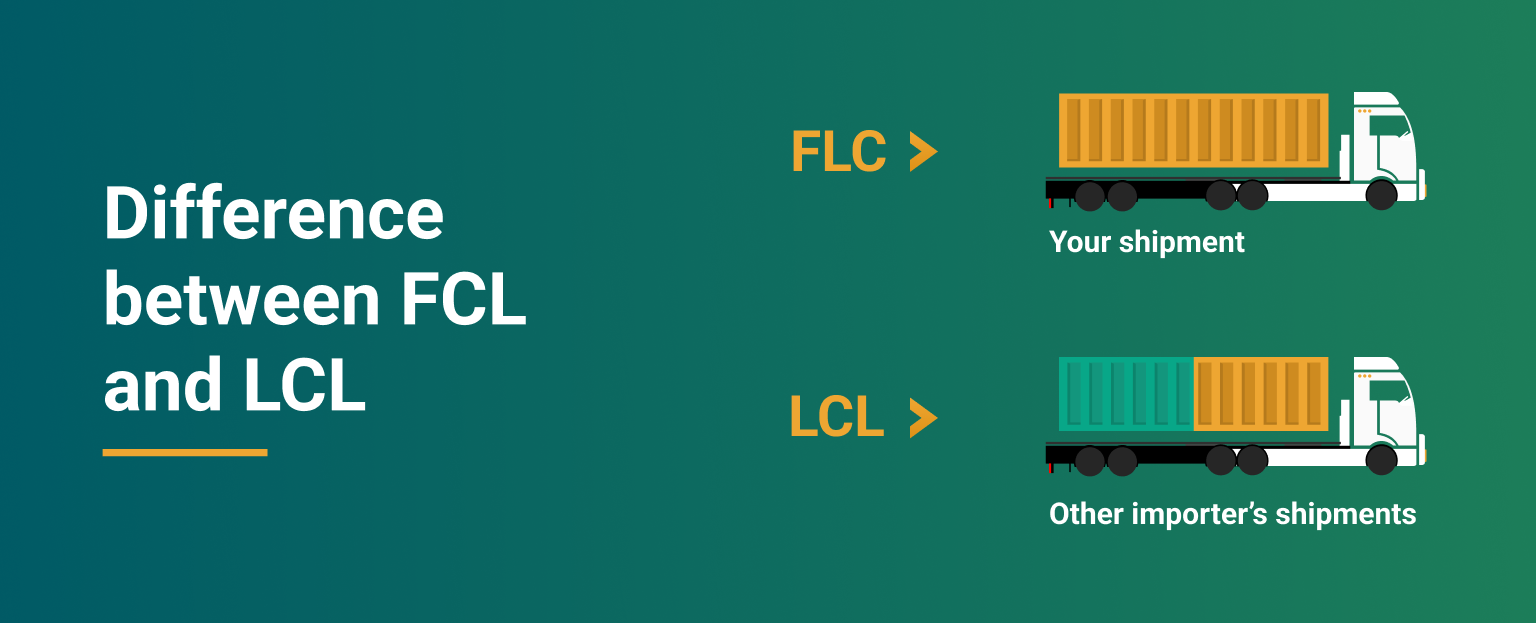
Get the perfect container size for your export needs on Container xChange
If you’re always tearing your hair out when it comes to looking for boxes, you’ve come to the right place.
With xChange, looking for containers is a whole lot easier than surfing through hundreds of websites. Whatever the container type you’re after, we’ve got it!
All prices on xChange are available up front, and all deals are negotiable. Search for boxes, communicate with partners, make payments and track boxes, all from the comfort of your desk. And rest assured, all of your payments are secure and protected, of course.
As an exporter, xChange can make your life a while lot easier, with all transactions and search results available to refer back to in future. You can also compare the prices on various boxes simultaneously, to make sure you get the best deal out there.
Interested in finding quality containers from reliable sources today? Click below to find the perfect boxes for your export needs, we’re certain you’ll never look back.
What is the average size of a shipping container?
The average size of a shipping container varies, however, the two most common sizes are the 20ft and the 40ft containers. The 20ft container is 5.9m / 19.4ft in length, 2.3m / 7.8ft in internal width and 2.3m / 7.9ft in height. The 40ft container is 12m / 39.5ft in length, 2.4m / 7.9ft in internal width and 2.3m / 7.9ft in height.
What is the size of a 20ft shipping container?
The size of the 20ft shipping container is always the same. This popular container type is 5.9m / 19.4ft in length, 2.3m / 7.8ft in internal width and 2.3m / 7.9ft in height.
Are shipping container sizes standardized?
Shipping container sizes are standardized globally. This is very important for efficiency in the fast-paced global trade industry of today. It allows containers to be packed tightly on ships, and for calculations to be quick and accurate.
What is the capacity of a 40ft container?
The capacity of a 40ft container is 2,389 cu ft / 67,7 cu m. The 40ft is 12m / 39.5ft in length, 2.4m / 7.9ft in internal width and 2.3m / 7.9ft in height.





